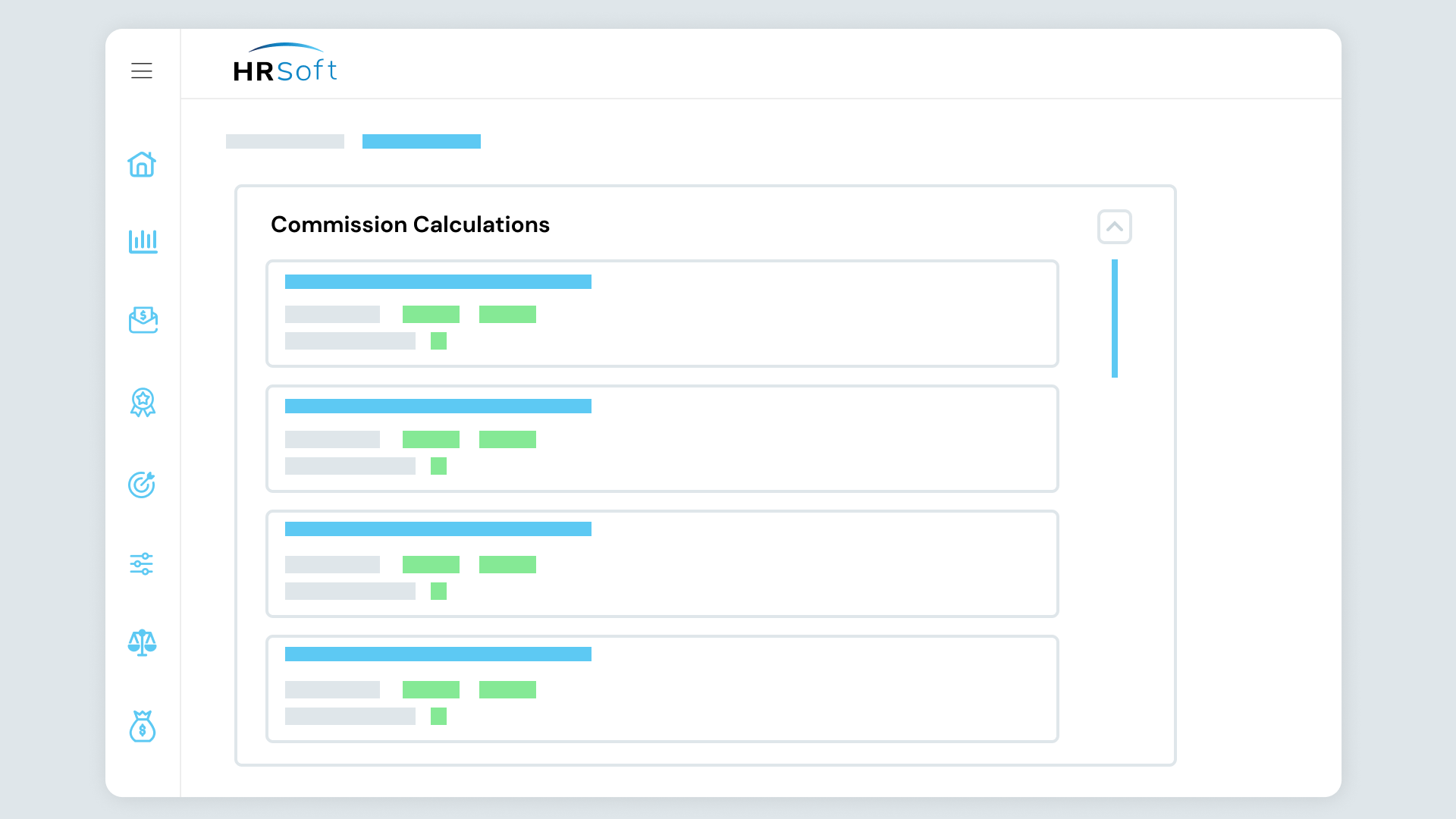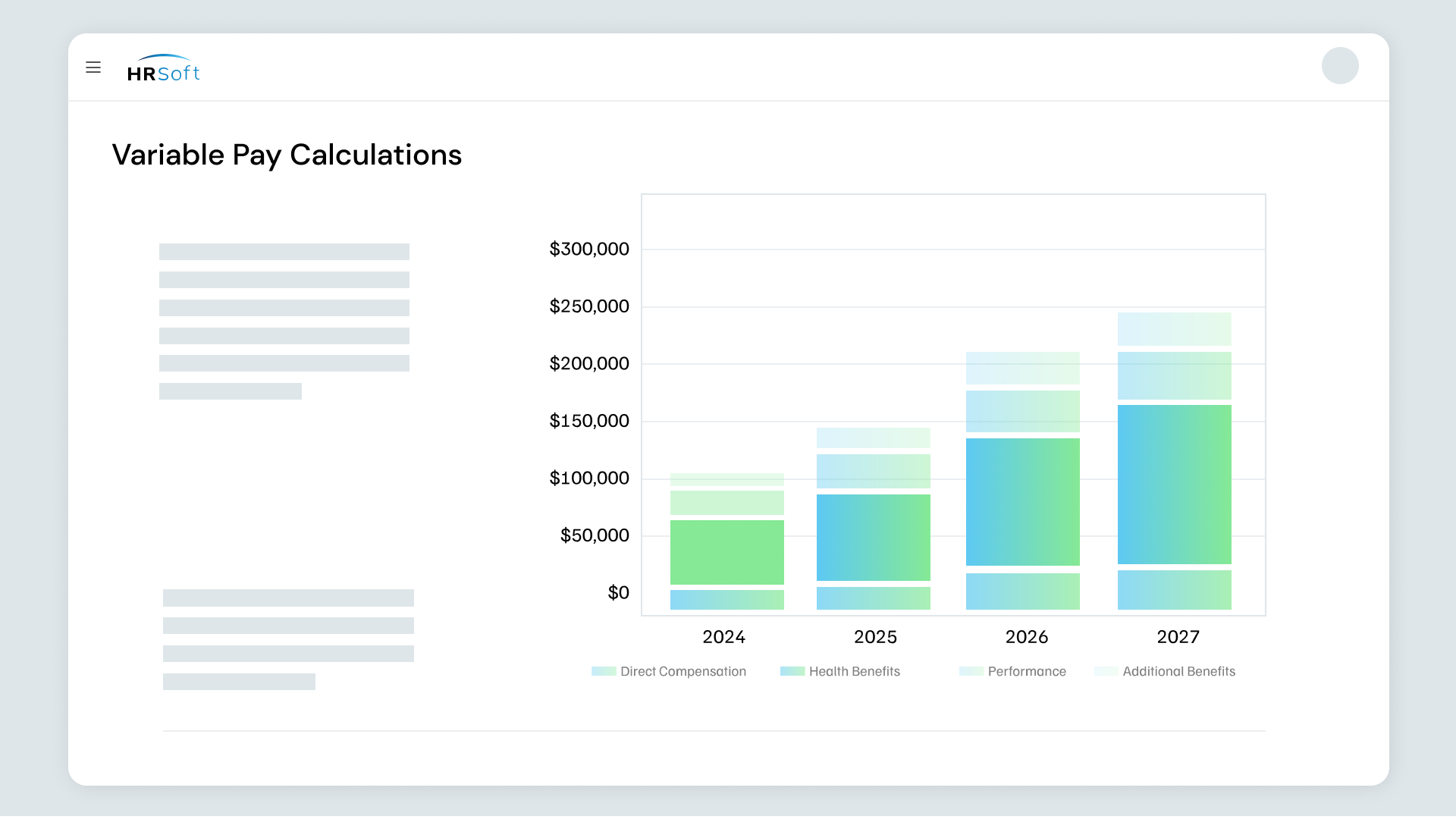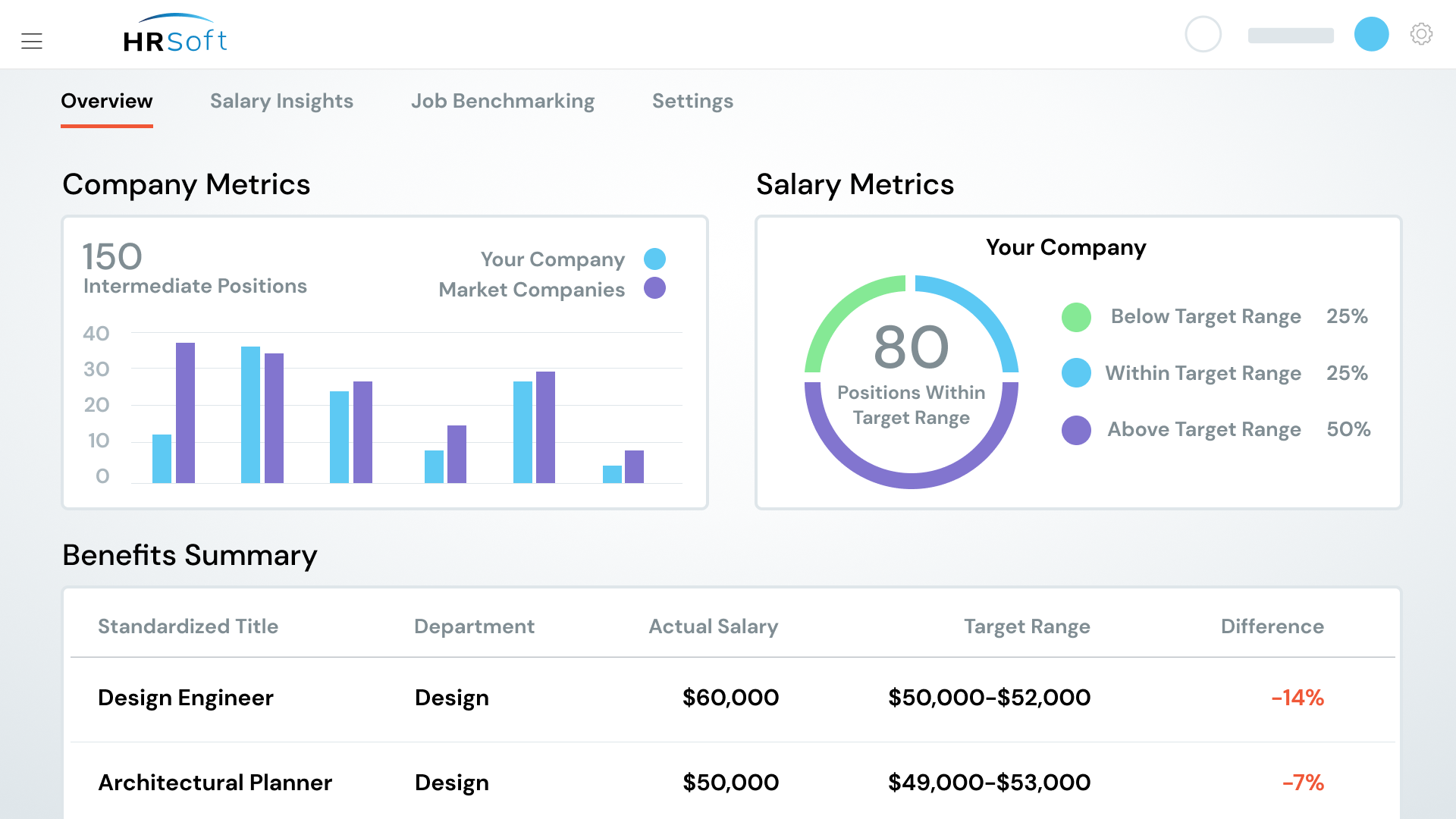
Pay-for-Performance Management and Compensation: A Symbiotic Relationship
Decisions about employee compensation can have an undeniable impact on an organization. While larger compensation packages can cost a company more, they serve as an










HRSoft's calculation engine automates commission calculations based on predefined structures, reducing errors and manual effort in payroll processing.
Enhance the accuracy of your sales commissions and variable incentives while saving time for your HR team so they can focus on more strategic tasks.

Provide new levels of transparency to variable pay calculations by clearly communicating how and why employees are compensated.
HRSoft offers detailed breakdowns of how variable pay is calculated and outlines the factors and criteria involved.

Empower your team with self-service tools that help manage plan updates, overrides and detailed breakdowns of compensation data.
By streamlining daily administrative tasks for HR, finance and executive teams, they can access and manage compensation information more easily. The result is smoother operations and improved decision-making processes.

Continue to evolve your compensation programs with HRSoft's scalable, low-code no-code platform.
We continuously update our compensation management software so your team can make iterative improvements, implement changes swiftly and customize solutions without extensive coding knowledge.

Decisions about employee compensation can have an undeniable impact on an organization. While larger compensation packages can cost a company more, they serve as an

When implemented correctly, performance-based pay has the potential to be straightforward and effective. Browse through these common issues so you can avoid them in your own organization.

Cultivating a pay for performance culture within the organization holds the key to aligning your employees with company directions, attracting and retaining top talent, as well as motivating them to strive for greater heights.
Give your team the tools they need to make better compensation decisions from day one.